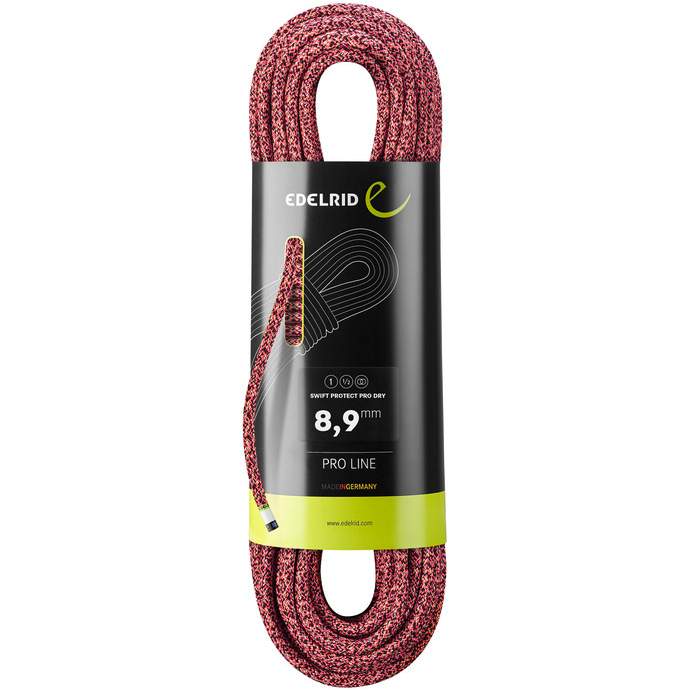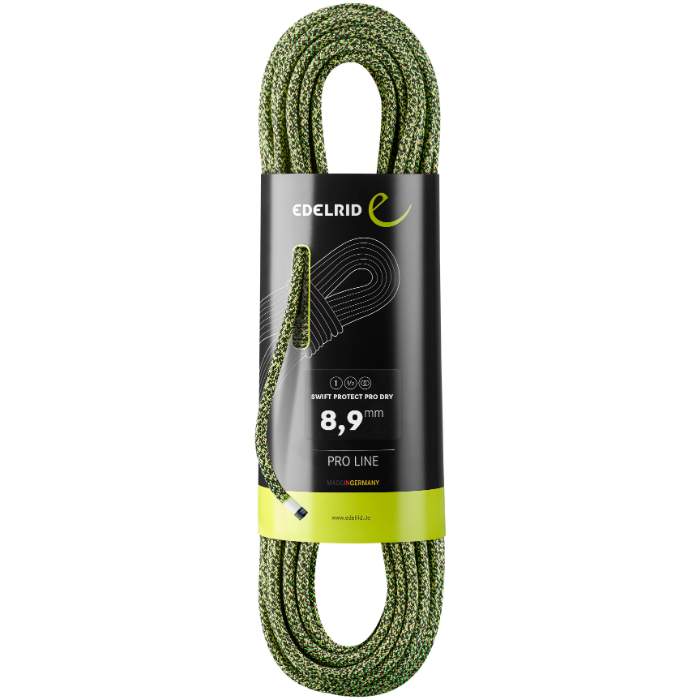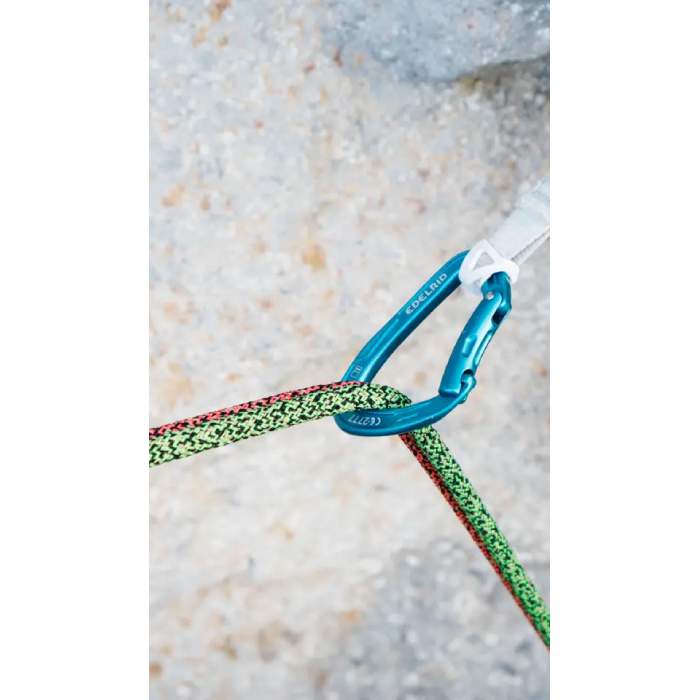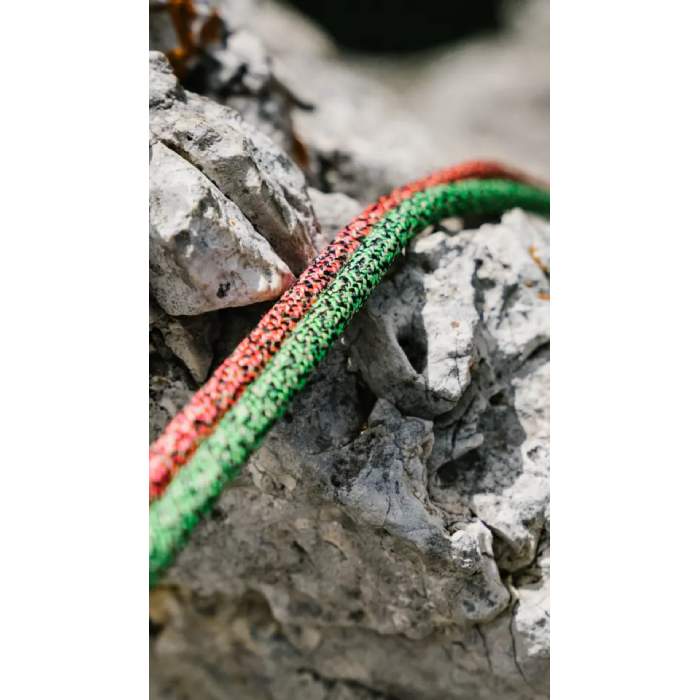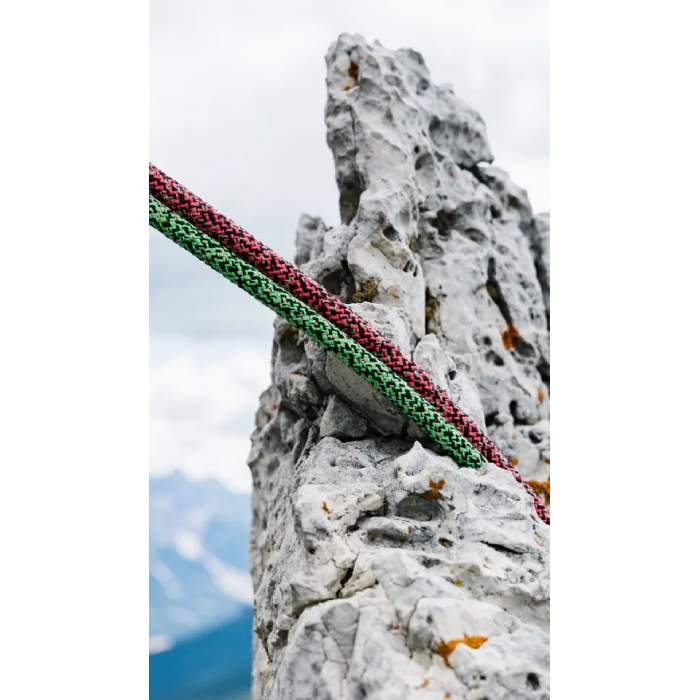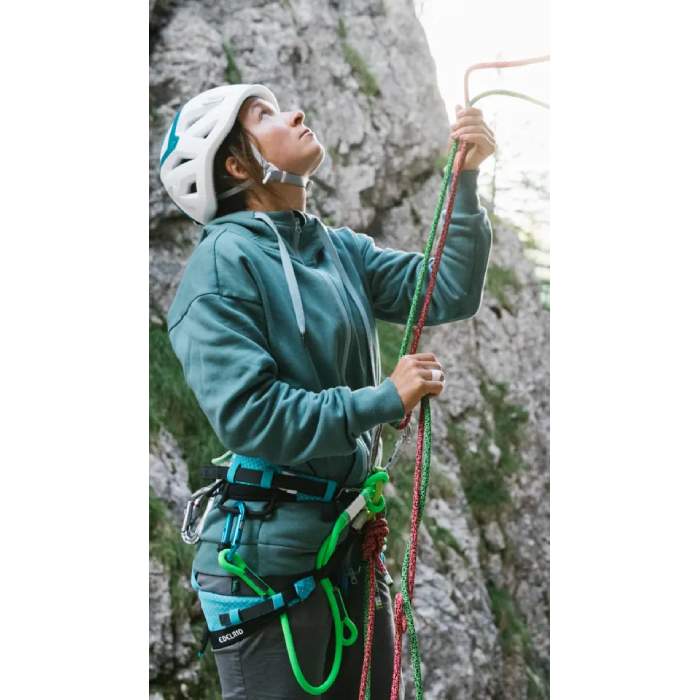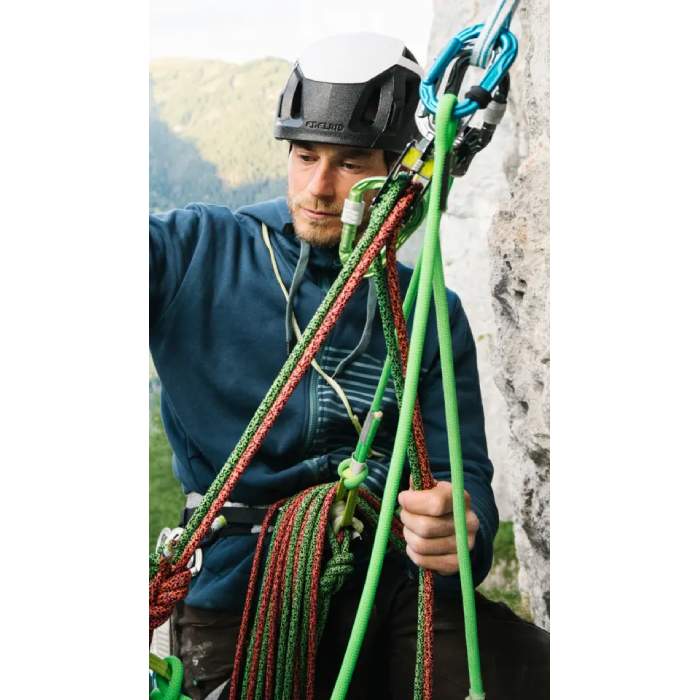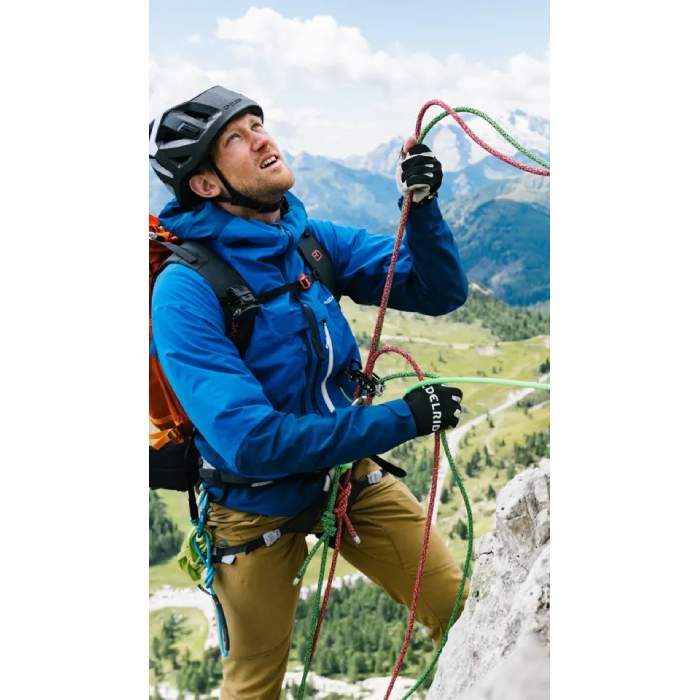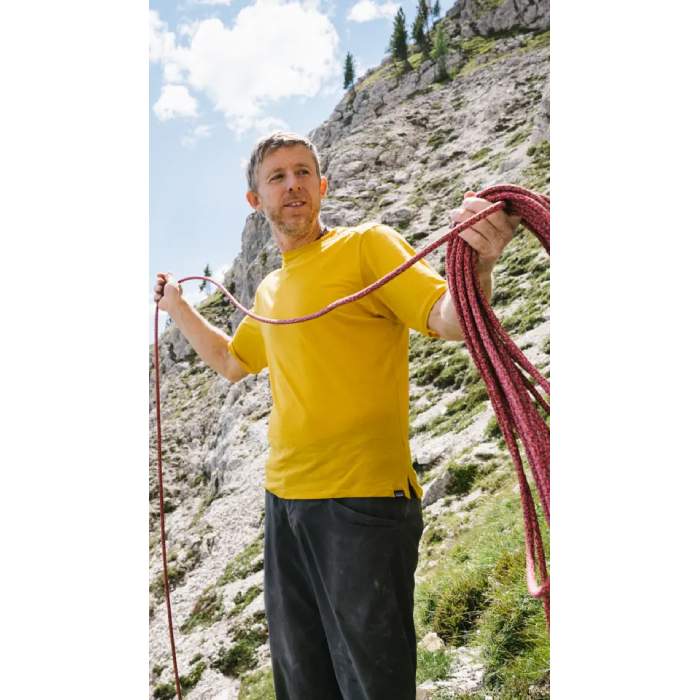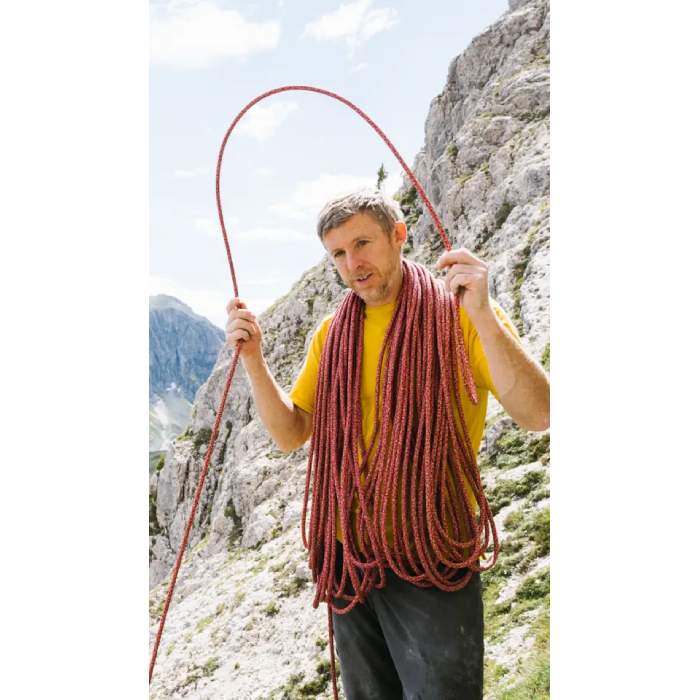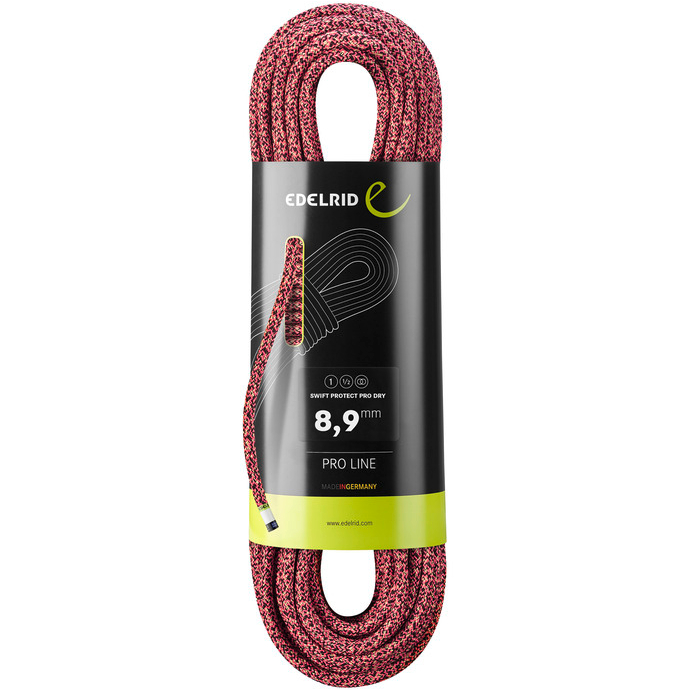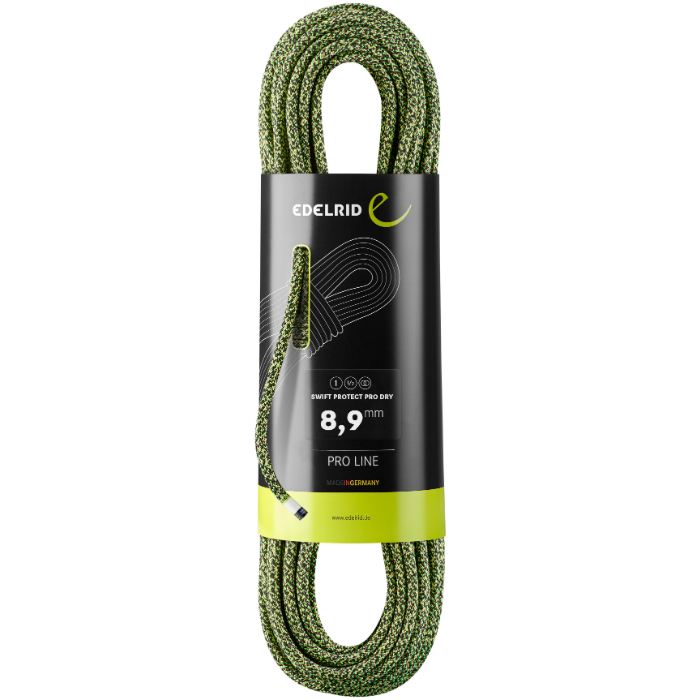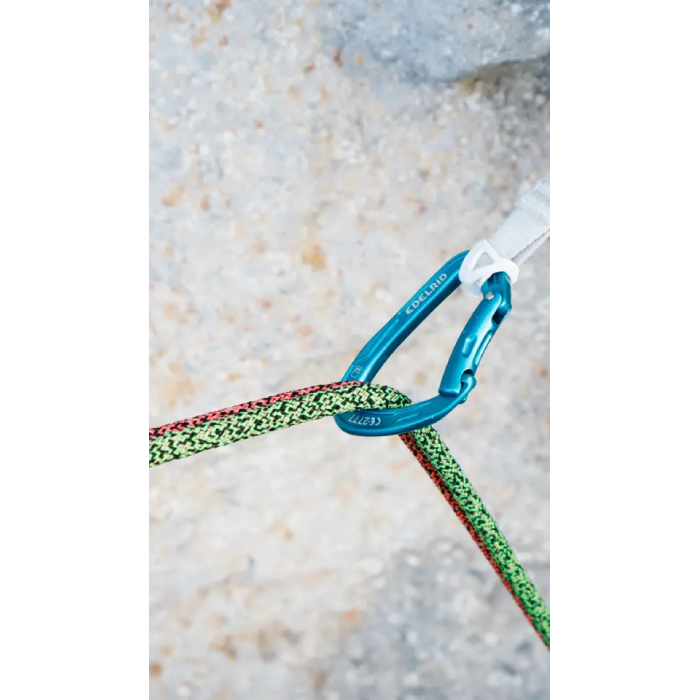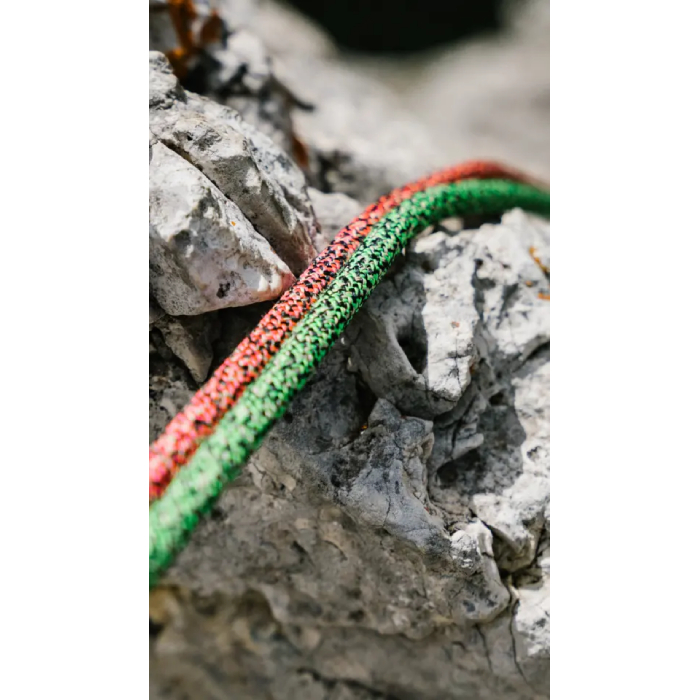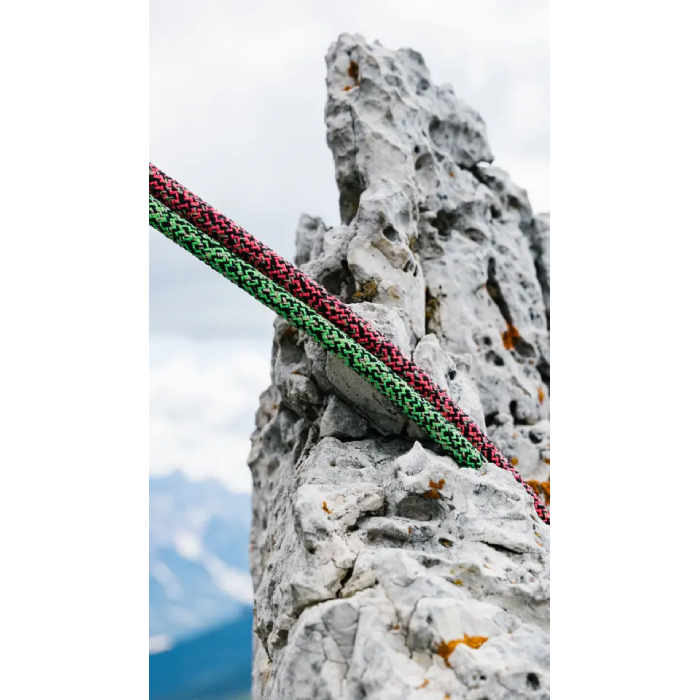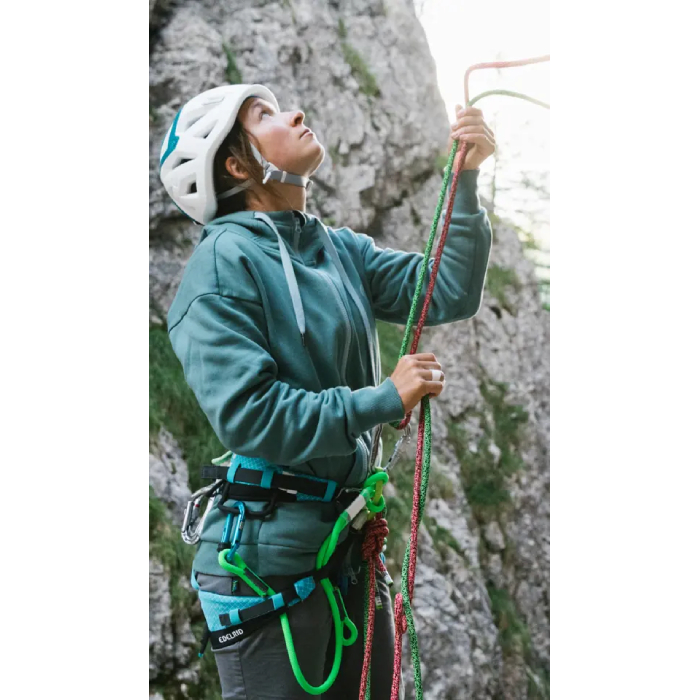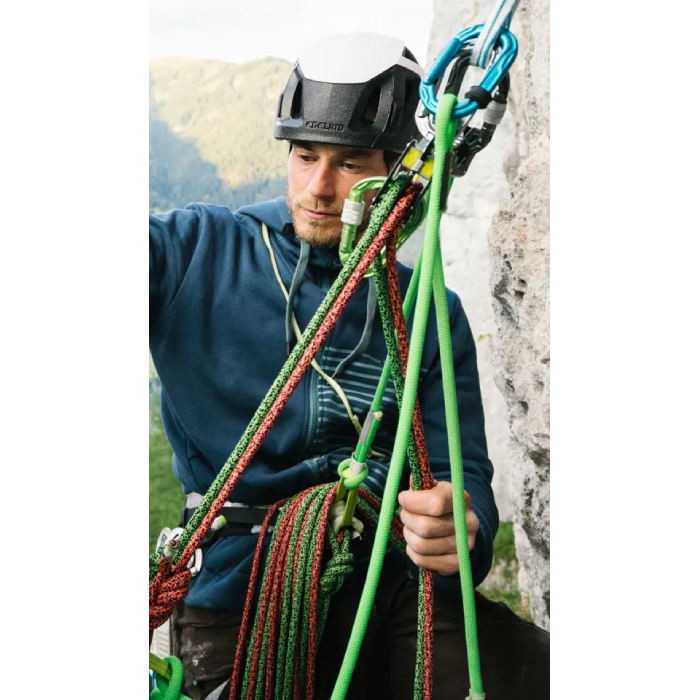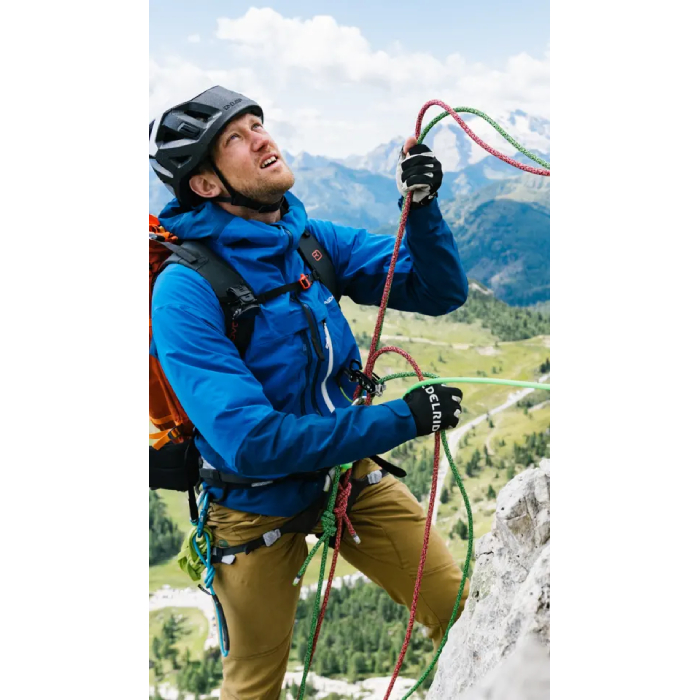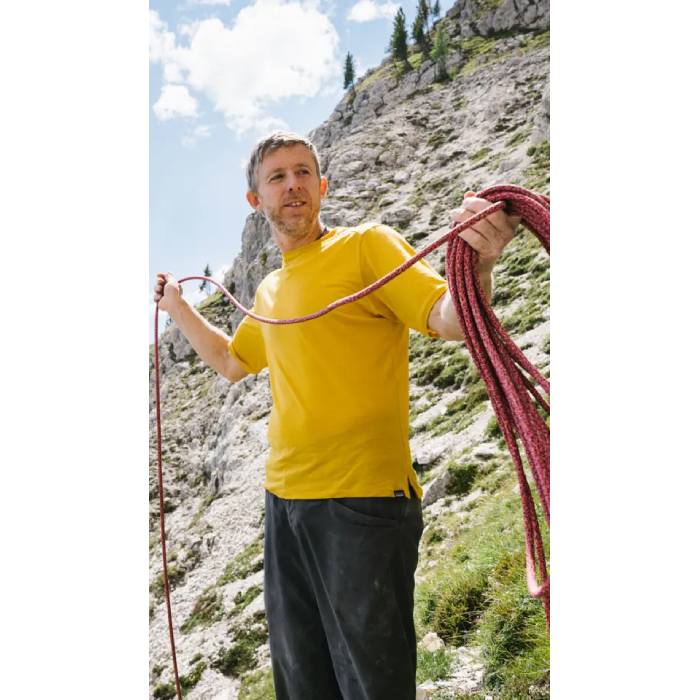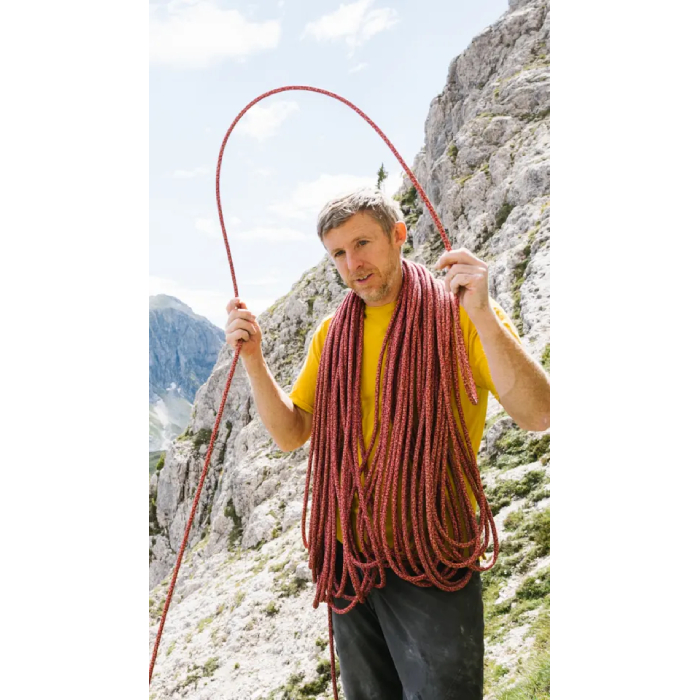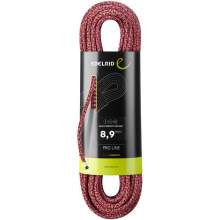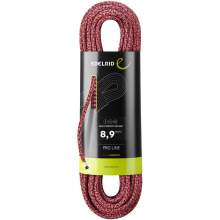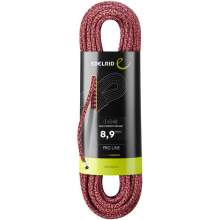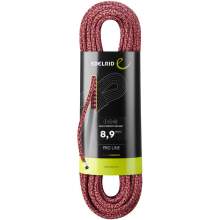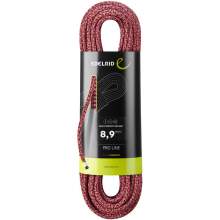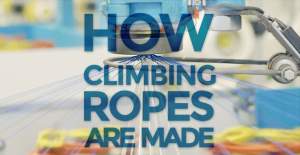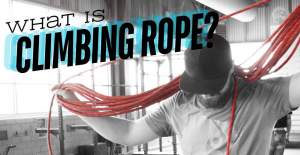How to use Edelrid rope, safety, storage, transport, care, lifespan and replacement with instructional pictures.
8.9mm Swift Protect Pro 60m 2xDry
Description
The first dynamic single rope with a sheath that includes aramid, for markedly increased cut resistance. Thanks to a special processing method, the Swift Protect Pro Dry remains dynamic. Despite reinforcement with aramid and the overall higher sheath content, the impact force remains within the required standard. These characteristics make the Swift Protect Pro Dry the ideal lead climbing rope and the perfect companion for alpine climbing and mountaineering.
- Thermo Shield treatment for perfect handling
- When used as a single rope, not suitable for top-rope or workout climbing
- Long-lasting water-repellent and dirt-resistant, thanks to the Pro Dry finish
- Water absorption less than 2% as per UIAA Water Repellent Test
- 3D lap coiling enables instant use without tangles
- Higher sheath content and aramid processing for increased cut resistance under load, e.g. over sharp edges
Retail price
When you click a link below and then checkout online, no matter what you buy (climbing gear or not), we get a small commission that helps us keep this site up-to-date. Thanks!


| Weight | 53.0 g/m 7.010 lbs / 3180 g |
| Diameter (millimeters) | 8.9 mm |
| Length (meters) | 60 m |
Rope Type  Type
There are 3 types of dynamic ropes that are used by climbers. They are known as Single, Half (Double), and Twin. The type of rope preferred varies by climbing style, location, and region. Single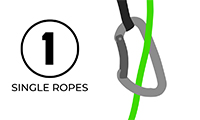
By far, the most common type of rope. Great for indoors and out. In the US, it is the most common sport and big wall and are also used for trad cragging. The handling is simple and the diameter options are quite varied. Half (Double)
The best cure for a meandering route, only one of the ropes will clip into each piece of protection so a mindful climber can can reduce rope drag considerably. You can also rappel twice the distance, it’s easier to safely protect traverse pitches and there is a smaller chance that both ropes would become damaged (by rockfall, crampons, etc). Twin
Both ropes must be clipped through each piece of protection. This is the lightest style of (two) ropes. They excel for rappels, going twice the distance vs a single rope, but do not have the ability to mitigate rope drag even though there are two ropes. It is unlikely both ropes will be damaged at once, and is why many alpine, ice and mixed climbers choose twin and/or half ropes. Learn More
Every rope type and when to use them | Single/Half/Twin |
UIAA Falls (Single / Half / Twin)  UIAA FallsThis refers to the number of UIAA falls a rope has been tested to be able to withstand without breaking. The UIAA fall is a complicated test that is designed to create a uniform standard for strength in ropes, and is not generally reflective of real-world climbing situations. The test involves dropping a weight tied to the rope in such a way that it will see the highest amount of force a real-world situation could generate. The UIAA requires that Single and Half ropes must pass this test without breaking at least 5 times, while twin ropes must withstand 12 falls. In practice, it can likely be concluded that ropes that have higher than this standard number of falls will be stronger and put up with more abuse. It is important to note that any rope that is UIAA or EN certified is considered safe to climb on, regardless of the number of UIAA falls it is rated for. | 6 falls / 18 falls / 30 falls |
Dynamic Elongation (Single / Half / Twin)  Dynamic ElongationThis refers to the amount of stretch measured during the dynamic testing (or drop test) used when certifying ropes. Higher stretch will absorb more force and result in a softer catch but increases chances of groundfall at the beginning of a climb. The EN and UIAA require a stretch of at least 10% and no more than 40% for dynamic ropes. Single and Half ropes are tested individually and Twin ropes are tested as a pair. | 29.0 % / 26.0 % / 25.0 % |
Static Elongation (Single / Half / Twin)  Static ElongationThis refers to the amount of stretch measured during the static test used when certifying ropes. Most climbers will notice the difference in static elongation when climbing in a top rope situation, where higher stretch will make for a springier belay and could result in a ground fall when climbing closer to the ground. The EN and UIAA require a stretch of no more than 10% for Single and Twin ropes and no more than 12% for Half ropes. Single and Half ropes are tested individually and Twin ropes are tested as a pair. | 5.5 % / 5.2 % / 3.5 % |
Impact Force (Single / Half / Twin)  Impact ForceImpact force is the amount of force in kN that is measured at the testing mass during the UIAA dynamic drop rope test. When the weight is dropped, the force measured must be at or below 12kN for Single and Twin ropes and 8kN for Half ropes. The real world application of this test is determining that the rope can dissipate and absorb the appropriate amount of force from the fall as it would be felt by the climber. The variables used in the test set a situation that is well beyond anything climbers encounter, and shouldn't be considered realistic to actual climbing situations. In reality forces of this magnitude would result in severe injury as this test is designed to test the limits of the rope and not the comfort of the climber. | 9.90 kN / 7.30 kN / 11.80 kN |
Dry Treatment  Dry TreatmentWhen a rope is dry treated, it has had a coating applied to its core fibers, its sheath fibers, or both. The purpose of this coating is to reduce the amount of water the rope can absorb when in wet or icy conditions. Wet ropes are heavier, handle and belay differently, and have been tested to be weaker than dry ropes. Many climbers prefer dry treated ropes for very dusty or dirty environments, as they are more resistant to uptake of dirt and can stay cleaner longer. Learn More
Benefits of Dry vs Non-Dry ropes | Sheath & Core UIAA Certified Dry |
| Sheath Proportion (%) | 36.0 % |
| Sheath Slippage (mm) | |
| Type of Middle Mark | Marking |
| Rope End Marker | None |
| Certification | CE |
RFID / NFC Option  RFID and NCFThis technology can be helpful if you are a gym or professional business where you'd like to track the usage and age of your ropes. RFID is how items are uniquely identified using radio waves (Radio Frequency Identification). It's for 1-way communication from 10cm to 100m away depending on the frequency. Example: Airport Baggage. NFC is a subset of RFID that is restrained to close proximity communication typically less than 10cm (Near Field Communication). NFC chips can operate a 2-way signal to exchange information. Example: Apple Pay. | None |
No reviews yet.
All in all, the Edelrid Swift Protect Pro dry rope seems like a great step forward for rope design. But, how does it perform? When you first use it you are likely to think the rope is fairly stiff. However, it soon softens up and works well with any belay devices we have used it with. The tight weave also inspires confidence that it will be durable and wear resistant. The other thing to note is that the sheath is quite rough in the hand. This actually makes gripping the rope very easy. This is a great benefit when using the rope in an instructing capacity.
After an uncertain start I have been very impressed with the Edelrid Swift Protect Pro Dry. Its increased cut resistance increases my safety margin when mountaineering with two clients, for only a nominal weight gain. This together with it being easy to hold in the hand makes it my go to rope for mountaineering. I think the rope will be of particular interest to guides and instructors, but this would also be my rope of choice when climbing with friends on gnarly alpine routes. When it wears out I will definitely be purchasing another to replace it.
Overall, the Swift Protect Pro Dry 8.9 blew my mind. There is nothing else on the market like it, and I can’t believe that it took rope companies this long to figure something like this out. Since I’ve started climbing, rope innovation has mainly involved them just getting incrementally skinnier. As a gear nerd, the introduction of aramid has me really excited about what the future of climbing ropes will look like. I would recommend it to anyone that is looking for the ultimate alpine climbing rope, with the greatest amount of built-in safety available in such a lightweight package. But I would also recommend it to anyone who sport climbs in an area with particularly sharp rock or just wants that added level of cut resistance.

